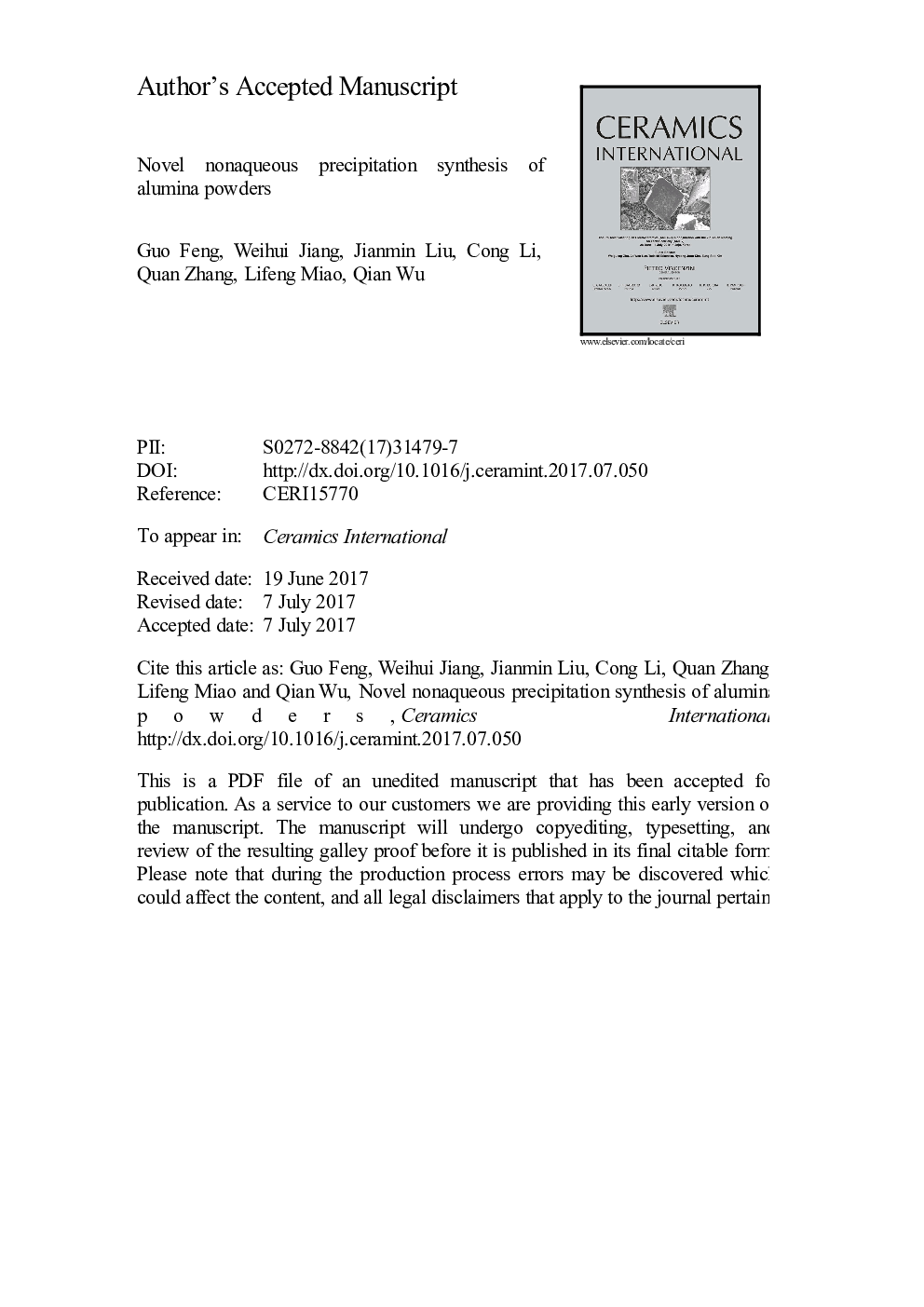| Article ID | Journal | Published Year | Pages | File Type |
|---|---|---|---|---|
| 5437846 | Ceramics International | 2017 | 15 Pages |
Abstract
Alumina powders were prepared via a novel nonaqueous precipitation method with aluminum powders as aluminum source and anhydrous acetic acid as precipitant. The thermal decomposition and phase transformation of crystal precipitate and the influence of precipitate aging were investigated via TG-DTA-MS, XRD, TEM, BET, FE-SEM and performance tests of sintered bodies. The results show crystal precipitate C4H7AlO7 transforms to amorphous Al2O3 at 300 °C, and then to γ-Al2O3 at 950 °C, and finally to α-Al2O3 at 1050 °C. The particle size of α-Al2O3 prepared at 1100 °C is 50-100 nm with BET surface area of 25.98 m2âgâ1. FE-SEM morphology of sintered sample at 1400 °C shows excellent sinterability of the α-Al2O3 powders. Aging eliminates aggregation, and leads to highly homogenized and densified particles. It also affects the densification behaviour during sintering and further influences density, thermal expansion coefficient, flexural strength, volume resistivity and electric breakdown strength of sintered bodies
Related Topics
Physical Sciences and Engineering
Materials Science
Ceramics and Composites
Authors
Guo Feng, Weihui Jiang, Jianmin Liu, Cong Li, Quan Zhang, Lifeng Miao, Qian Wu,
